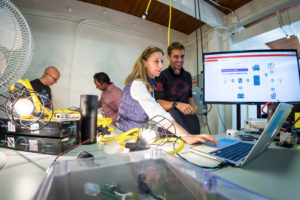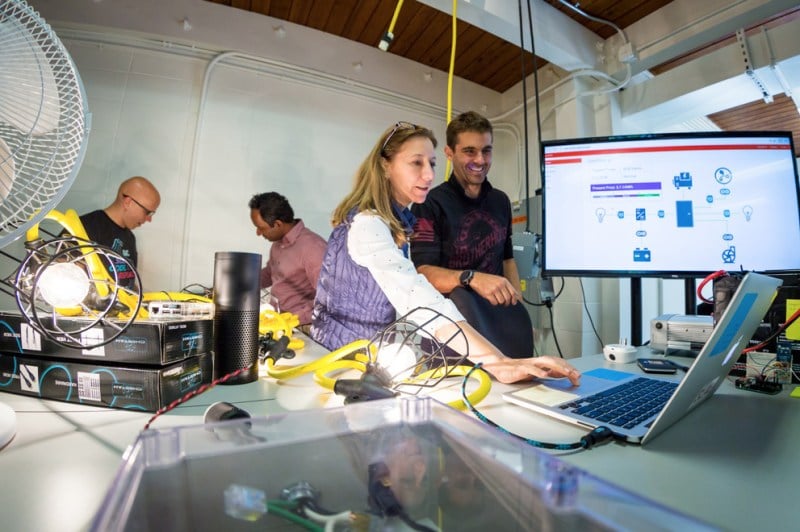SLAC and Stanford are joining forces to launch Bits & Watts, an initiative to design a 21st century electric grid to better accommodate clean energy sources.
According to a press release by SLAC National Accelerator Laboratory, the effort will develop “smart” technologies for cheap, efficient and secure national energy distribution, as well as new models for navigating the financial incentives behind clean energy.

Bits and Watts aims to holistically incorporate new sources of clean energy into the current electric grids — an interconnected network used for distributing and delivering electricity to consumers.
“The first challenge was to bring down the cost of wind, solar and other forms of distributed power,” said Steven Chu, physics professor and former U.S. Secretary of Energy in the SLAC press release. “The next challenge is to create an integrated system. We must develop the right technologies, financial incentives and investment atmosphere to take full advantage of the lowering costs of clean energy. ”
In the U.S., two continent-spanning electric grids and a smaller grid in Texas currently handle the majority of the energy needs. This grid is a complex and finely tuned system designed for energy flow from central power generators to consumers. However, because the current grid cannot store energy, it is impractical for the growing use of renewable energy such as solar and wind, which are produced on and off subject to weather conditions.
In order to allow for bidirectional power flow as well as more adaptive control and storage for such energy sources, new tools for simulating, surveying and regulating power usage are necessary to keep the grid stable and secure.
“As we incorporate more low-carbon, highly variable sources like wind and solar… we’ll need a whole new set of tools, from computing and communications to controls and data sciences, to keep the grid stable, efficient and secure and provide affordable energy,” said co-director Arun Majmudar in SLAC’s press release.
The initiative combines technical research, policy and industry expertise to build a central framework that addresses the technical as well as consumer demands of the current electric grid. Beyond creating “smart” technologies to improve the modern grid, the Bits and Watts will consider market and pricing mechanisms to develop solutions to global energy needs.
“SLAC and Stanford, in cooperation with industry and electricity system stakeholders, will rise to the challenges of building a modern grid that will make a clean energy future possible,” said SLAC director Chi-Chang Kao in the press release.
Co-directed by professor of mechanical engineering Arun Majmudar and professor of economics Frank Wolak, Bits & Watts consists of two labs connected through the cloud within the University and SLAC. Researchers are working on sensory feedback systems for grid operators, simulating electric grid flow and developing a “home hub” system for controlling and monitoring home appliances.
Initial projects are funded by industry and government agencies. To ensure rapid adoption and use of results by other researchers, the program will offer training and education to Stanford undergraduate and graduate students and power industry executives. Grid-related software will also be open source.
Contact Nancy Xu at xnancy ‘at’ stanford.edu.
